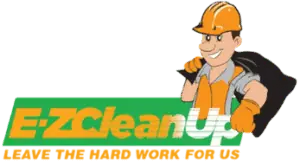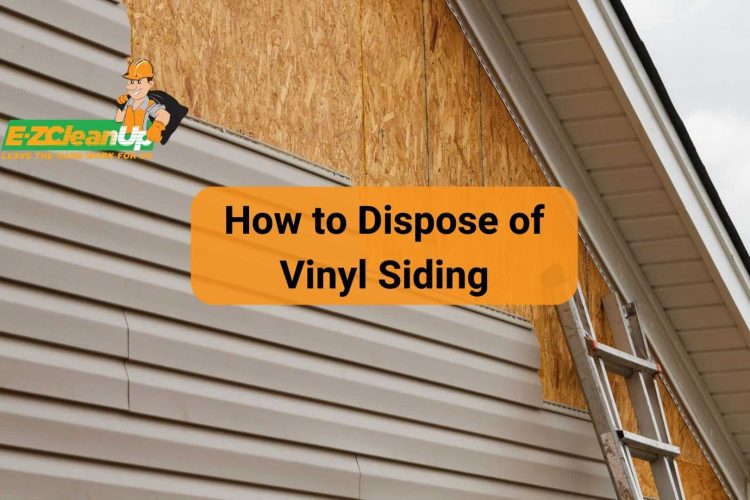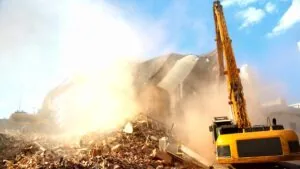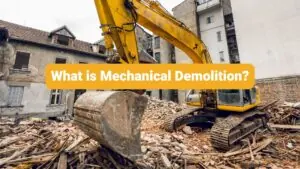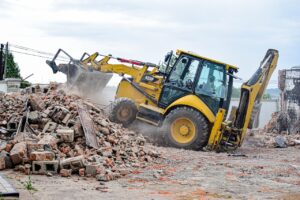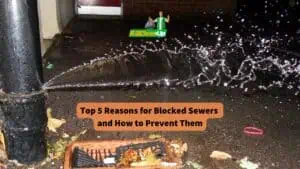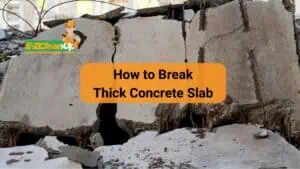To dispose of vinyl siding, remove, sort, and clean it before recycling at a specialized facility. Moreover, you must explore local options for eco-friendly disposal.
Discover other ways on how to dispose of vinyl siding, its recycling benefits, and best practices in our article below.
Preparing Vinyl Siding for Disposal or Recycling
Vinyl siding is a popular exterior finish for homes, valued for its durability and low maintenance. However, when it’s time for replacement, disposing of old vinyl siding responsibly becomes a challenge.
Recycling vinyl siding requires coordination with facilities that accept this material, as not all recycling centers are equipped to handle PVC. It’s essential to separate vinyl siding from other waste to avoid contamination and to ensure it is recycled efficiently.
Preparation is crucial when disposing of or recycling the material. It involves several steps to ensure it’s ready for its next phase.
1. Sorting and Separating Vinyl Siding
The first step in preparing vinyl siding for disposal or recycling includes removing the siding from the house and detaching any attached materials like foam backing or nails. It’s helpful to sort the siding by color, thickness, and type.
This sorting process is vital for recycling centers to efficiently process the material into new products. Ensuring the vinyl siding is free from contamination by other materials is crucial for a successful recycling process.
2. Cleaning Vinyl Siding Before Disposal
This step involves removing any dirt, debris, or other contaminants that might be on the siding. A clean piece of siding is less likely to contaminate the recycling process and is more likely to be accepted by recycling facilities. Simple brushing or wiping down can significantly increase the recyclability of vinyl siding, making it a crucial step in the preparation process.
3. Measuring and Cutting to Meet Size Restrictions
Most recycling centers have specific size requirements for the materials they accept. Cutting the siding into manageable pieces ensures that it can be processed more easily, whether it’s being recycled or disposed of. Using the right tools, such as a sharp utility knife or saw, and adhering to safety practices during this step are important for effective preparation.
Recycling Options for Vinyl Siding
Vinyl siding, a common material used on home exteriors, doesn’t have to end up in landfills. Through recycling, it can proceed on a new life cycle, which can contribute to the production of various products and support eco-friendly practices.
How Vinyl Siding is Recycled
The first step in recycling vinyl siding is the collection process. Finding a dedicated vinyl recycling facility is crucial, as these specialized centers have the capability to process vinyl siding correctly. Local landfills or online databases often list such facilities, which makes it easier for individuals to participate in recycling efforts.
Delivery to Recycling Facilities
After collection, the vinyl siding must be transported to a certified recycling facility. These facilities are equipped to handle PVC materials and can ensure that the siding is recycled properly.
Arranging transportation might require coordination with local services or recycling centers that accept large volumes of material. This step is vital to ensuring that the vinyl siding reaches a place where it can be repurposed responsibly.
The Recycling Process and Creation of New Products
Once the vinyl siding arrives at the recycling facility, it undergoes a series of processes to transform it into new products. The siding is first cleaned to remove any residual dirt or debris. It’s then shredded into smaller pieces, which are melted down and reformed into pellets.
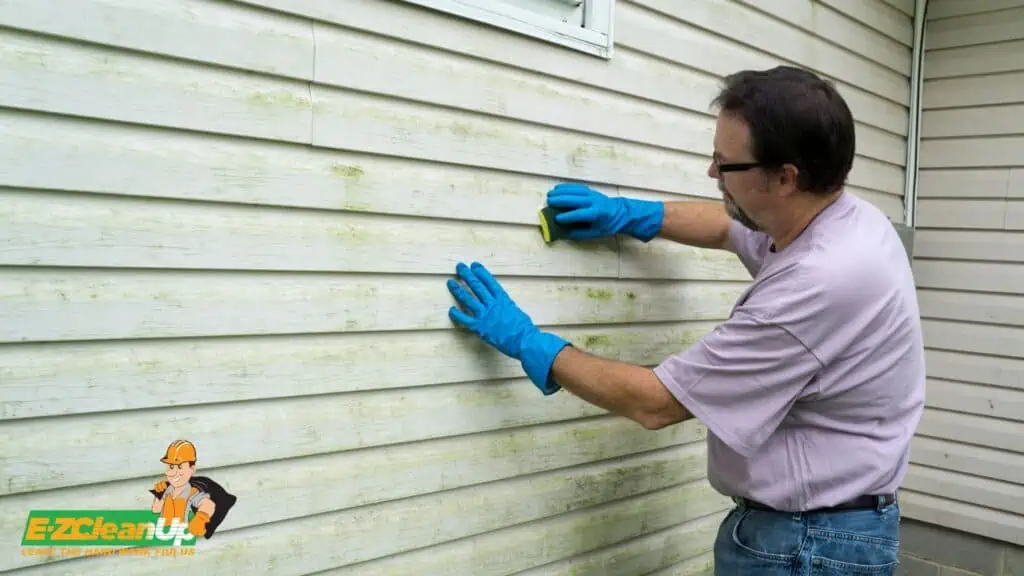
Benefits of Recycling Vinyl Siding
The recycling of vinyl siding is an act of environmental responsibility and a significant step towards a more sustainable future. This practice offers considerable benefits, which include the following:
Environmental Impact
Recycling vinyl siding plays an important role in minimizing our environmental footprint. It conserves resources by reducing the demand for new raw materials, which, in turn, lowers energy consumption and decreases greenhouse gas emissions.
Additionally, recycling prevents vinyl siding from reaching landfills, where it can take centuries to decompose, if at all. This action significantly reduces the potential for toxic chemicals to leach into the soil and groundwater. It protects our ecosystems and contributes to cleaner air and water.
Contribution to the Circular Economy
The circular economy is a system of resource utilization where reduction, reuse, and recycling prevail over disposal. Recycling vinyl siding embodies this principle. It conserves resources while stimulating innovation and efficiency in product design and manufacturing processes.
Moreover, recycling vinyl siding supports economic development by creating jobs in the recycling and manufacturing industries and by offering materials for new products at a lower environmental and financial cost.
Where to Recycle Vinyl Siding
Whether you’re a homeowner looking to dispose of old siding or a contractor with leftover materials, knowing where to turn can make all the difference.
Local Recycling Centers
Your first port of call should be a local recycling center. Many of these centers are equipped to handle vinyl siding, especially if they specialize in construction materials. It’s important to contact these facilities in advance, as acceptance policies may vary.
Additionally, building product distributors sometimes offer recycling services or can direct you to nearby facilities that accept vinyl siding. This local approach supports recycling efforts while helping reduce the carbon footprint associated with transporting materials over long distances.
Specialized Recycling Programs
For those seeking more dedicated options, specialized recycling programs offer a solution. The Vinyl Siding Recycling Coalition Pilot Program, for instance, is designed to facilitate the recycling of vinyl siding by connecting stakeholders across the construction and recycling industries.
Furthermore, the Vinyl Institute Recycling Directory is an invaluable resource for locating recyclers by geographic area and the types of PVC materials they accept. These programs play a crucial role in expanding recycling infrastructure and making it more accessible for everyone involved.
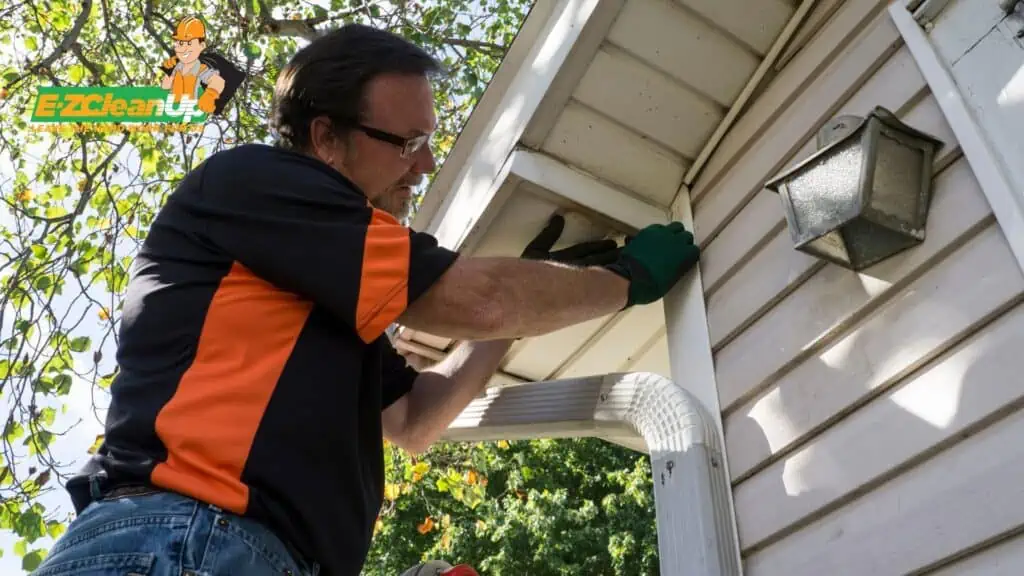
Disposal Options for Vinyl Siding
Finding the right disposal options for vinyl siding, whether in small or large quantities, is essential for maintaining environmental integrity. This section outlines practical and environmentally friendly methods for disposing of vinyl siding while ensuring that materials are handled responsibly.
For Small Quantities of Vinyl Siding
Take a look at the following options if you have small quantities of the materials to get rid of:
1. Residential Recycling Programs
For homeowners or small-scale projects, local waste municipality recycling centers or building product distributors often accept small quantities of vinyl siding for recycling. It’s a convenient option that supports community recycling efforts and ensures that vinyl siding is repurposed or recycled properly.
2. Drop-off Locations
Many communities offer designated drop-off locations for recyclable materials, including vinyl siding. These facilities typically partner with recycling centers that can process vinyl siding.
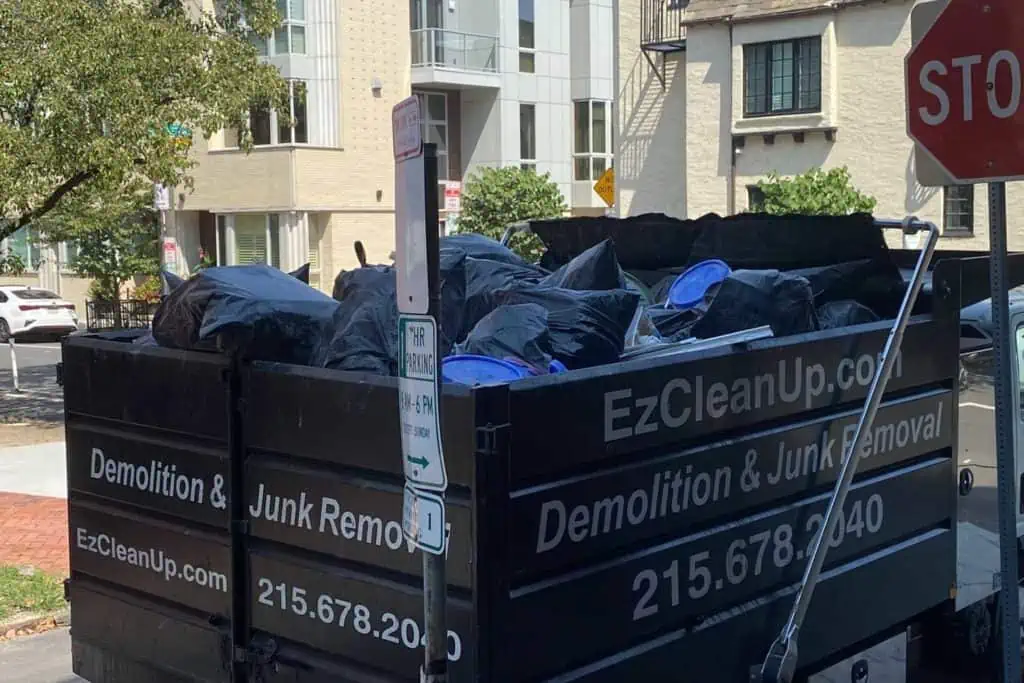
For Large Quantities of Vinyl Siding
Meanwhile, here are your choices for disposing of large quantities of vinyl siding:
1. Commercial Waste Disposal Services
Handling large quantities of vinyl siding, such as from construction sites or major renovations, may require the services of commercial waste disposal companies. These organizations specialize in managing large volumes of waste and can ensure that vinyl siding is disposed of or recycled in accordance with environmental regulations.
2. Construction Waste Disposal Companies
For substantial renovation projects or new construction, construction debris disposal companies, like us at EZ CleanUp, offer tailored services for the removal and recycling of vinyl siding. We have the capacity to manage large amounts of construction waste, including vinyl siding. Plus, we offer an efficient and environmentally responsible disposal method.
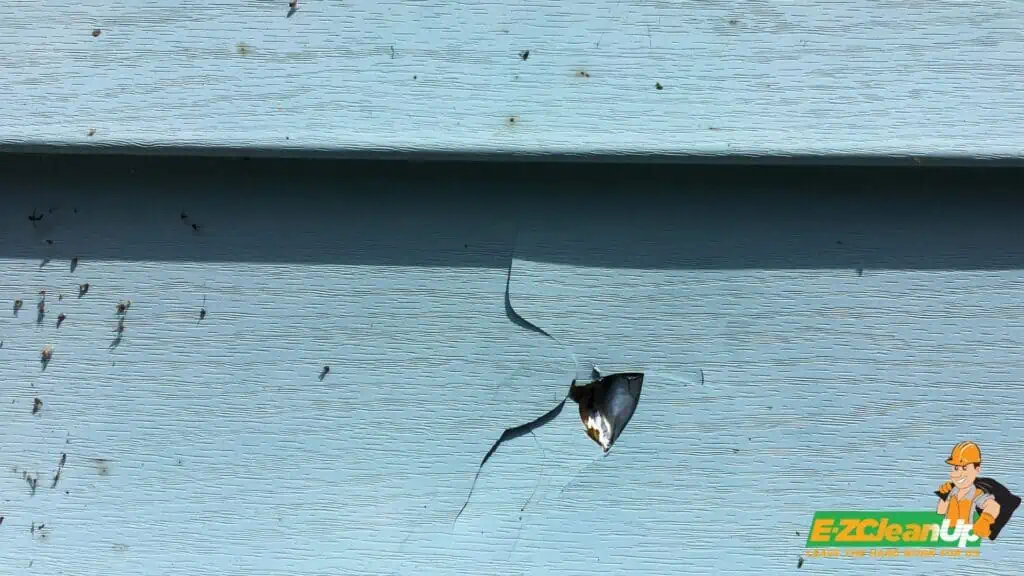
Best Practices for Handling Vinyl Siding Waste
Handling vinyl siding waste efficiently and safely is crucial for environmental protection, personal safety, and compliance with legal regulations. By following these guidelines, individuals and organizations can ensure that vinyl siding waste is managed in a responsible and sustainable manner.
Safety Considerations During Removal and Disposal
Safety should always be the priority when removing and disposing of vinyl siding. Wearing protective gloves, eyewear, and appropriate clothing can help prevent cuts from sharp edges and exposure to any potentially harmful substances.
Additionally, it’s important to handle vinyl siding with care to avoid breaking it into smaller pieces, which could release toxins, especially when improperly disposed of.
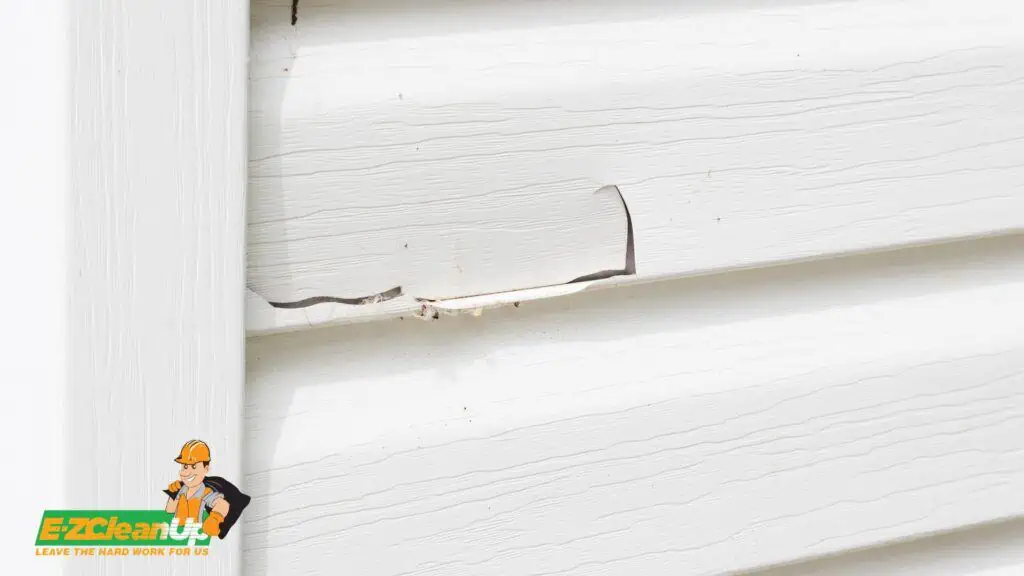
Legal and Regulatory Compliance
Abiding by local laws and regulations regarding the disposal of vinyl siding is essential. This includes understanding the requirements for recycling or disposing of construction materials and ensuring that vinyl siding is not sent to landfills where it could have a detrimental environmental impact.
Knowing and following these regulations can prevent legal issues and contribute to a more sustainable disposal process.
Minimizing Waste During Vinyl Siding Projects
Minimizing waste starts with planning and accurate measurement to reduce excess vinyl siding. Reusing or repurposing undamaged siding can also significantly cut down on waste. For siding that cannot be reused, recycling is a viable option.
By focusing on safety, regulatory compliance, and waste reduction, the disposal process for vinyl siding can be optimized to protect both human health and the environment. These best practices not only ensure the responsible handling of vinyl siding waste but also contribute to the broader goals of sustainability.
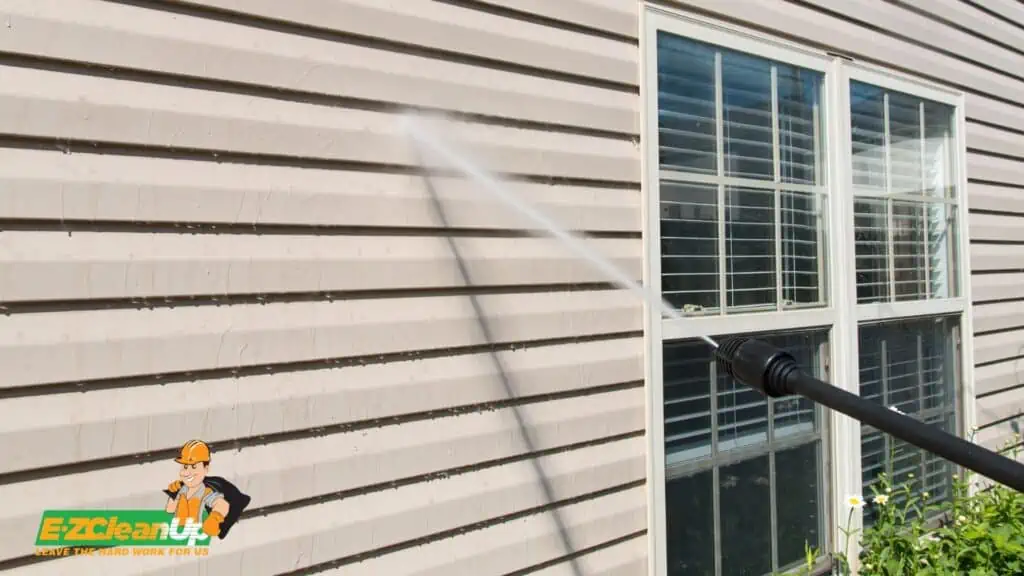
Vinyl Siding Disposal FAQ
Can Vinyl Siding Be Reused for Other Applications?
Vinyl siding can be reused for other applications. Once recycled, it can be transformed into a variety of products, such as vinyl pipes, flooring, decking, and even toys. This versatility underscores the material’s value beyond its initial use as siding.
Are There Any Fees Associated With Recycling Vinyl Siding?
The fees for recycling vinyl siding can vary depending on the recycling facility and the amount of material being recycled. Some facilities may offer free services, including pickup and transportation, especially for large quantities or if the material is being donated.
What Should I Do if There Are No Recycling Options Available in My Area?
If recycling options for vinyl siding are not available in your area, consider contacting nearby recycling centers, building product distributors, or local landfills to inquire about the closest facilities that accept vinyl siding. Additionally, exploring specialized recycling programs or initiatives may help expand recycling opportunities in your region.
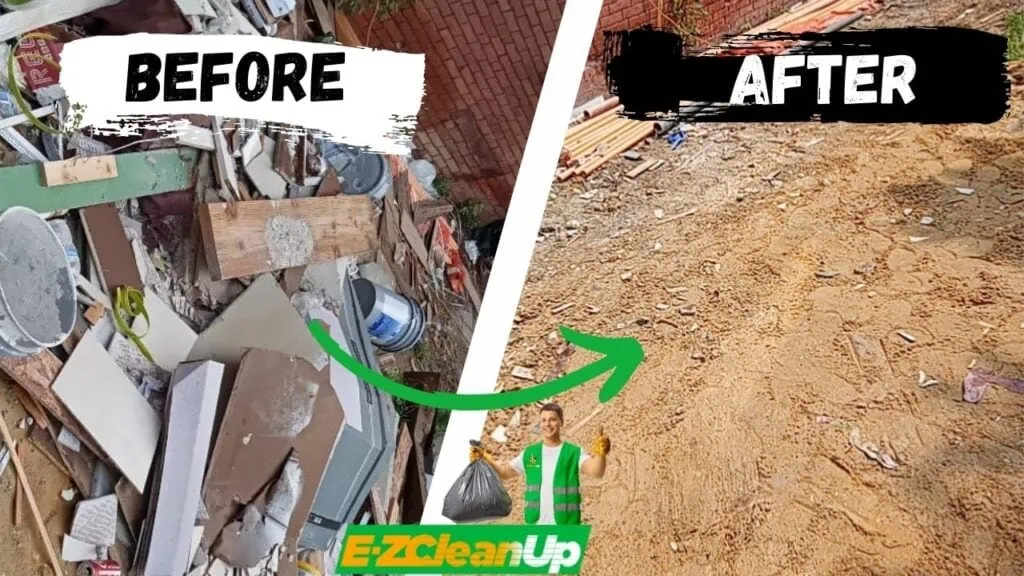
Always Make the Green Choice
Choosing eco-friendly methods to dispose of vinyl siding helps keep our planet clean. With each piece of vinyl siding we recycle, we’re not just avoiding landfills; we’re actively participating in the circular economy, fostering innovation, and supporting environmental wellness.
If responsible disposal seems challenging, remember, EZ CleanUp is here to help. From Philadelphia’s homes to its construction sites, our range of services ensures that doing your part for the planet is as easy as giving us a call.
Let’s work together to make a difference—one piece of siding at a time.
